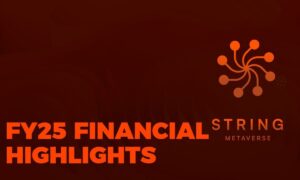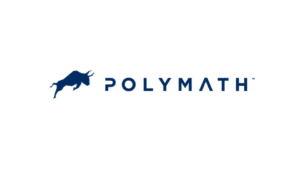The world of cryptocurrency continues to expand fast, offering new opportunities and methods for users to increase the value of their holdings. One such opportunity is digital asset lending and borrowing. This innovative process allows crypto holders to maximize their assets’ potential while offering lenders the chance to earn passive income. By leveraging the power of blockchain technology, this system opens up a new realm of possibilities within the financial sector.
What is Digital Asset Lending and Borrowing?
Digital asset lending and borrowing is a process where individuals or institutions can lend or borrow cryptocurrencies in exchange for interest. Lenders provide their crypto assets to borrowers in return for a fee, while borrowers access the assets for trading or investment purposes. This process, like traditional lending, relies on the principle of collateral. Borrowers typically have to offer an equivalent value in crypto as collateral to secure the loan.
These transactions are facilitated by decentralized finance (DeFi) platforms or centralized crypto exchanges. DeFi platforms offer a peer-to-peer model, eliminating intermediaries, while centralized exchanges function similarly to traditional banks, acting as middlemen in the process. Both methods allow for the efficient transfer and access of funds, although they differ in structure and risk management.
How Does Digital Asset Lending Work?
Digital asset lending works in a straightforward manner. If you’re a lender, you deposit your cryptocurrency into a lending platform or protocol. In return, you can earn interest on your investment. The interest rate can vary depending on the asset you are lending, the platform, and the demand for loans.
On the other hand, borrowers who need access to cryptocurrencies can request a loan from the platform, using their own crypto holdings as collateral. The loan amount they receive is typically less than the value of their collateral, usually around 50%-75% of the collateral value. If the borrower fails to repay the loan, the collateral is forfeited, safeguarding the lender’s investment.
Benefits of Digital Asset Lending and Borrowing
Maximizing the Value of Your Crypto
The primary benefit of digital asset lending is the ability to earn passive income. If you have cryptocurrency that is not currently being used, lending it out allows you to generate returns without selling your assets. These returns come in the form of interest, and rates can range from 5% to 20% or higher, depending on the platform and demand for the particular asset.
For borrowers, digital asset borrowing offers the flexibility to access funds without having to sell their crypto holdings. This can be particularly useful in volatile markets, where individuals want to maintain exposure to their assets while still having access to liquidity for short-term needs or trading opportunities.
Access to Liquidity
For borrowers, digital asset lending offers access to liquidity without liquidating assets. In the world of cryptocurrency, where market fluctuations can lead to significant gains or losses, having the option to borrow funds without selling crypto holdings can be a powerful financial tool. Borrowers can secure loans for various reasons, including leveraging positions in other investments, funding projects, or covering short-term expenses.
Diverse Investment Options
Lending platforms offer a wide range of assets to lend or borrow, including major cryptocurrencies like Bitcoin, Ethereum, and stablecoins like USDC. This variety enables lenders and borrowers to diversify their portfolios, ensuring greater financial flexibility. By lending less volatile coins like stablecoins, lenders can achieve more predictable returns while still participating in the growing DeFi ecosystem.
How to Lend Digital Assets
Lending digital assets is relatively simple, though it does require an understanding of the platform you are using. Here are the basic steps to follow:
Choose a Platform:
Select a reliable and secure platform to lend your digital assets. Popular platforms include Aave, Compound, and BlockFi. Each platform has its own set of rules, fees, and interest rates, so it is important to research before committing your assets.
Deposit Your Assets:
Once you’ve chosen a platform, deposit your cryptocurrency into the platform’s wallet or lending pool. The platform will then use your crypto to lend it to borrowers in exchange for interest.
Earn Interest:
The platform will distribute the interest earned from borrowers to you. Interest rates can fluctuate depending on market demand, but they are typically paid out on a weekly or monthly basis.
Withdraw Funds: You can withdraw your crypto at any time, although some platforms may impose withdrawal fees or require a minimum lending period.
How to Borrow Digital Assets
Borrowing digital assets involves similar steps but with a few more considerations. Here is how the borrowing process typically works:
Select a Platform:
Choose a lending platform that allows borrowing. Platforms like MakerDAO, Compound, and Nexo offer borrowing options for crypto holders.
Provide Collateral:
When borrowing, you must provide collateral, which will be locked in the platform as security. This collateral is typically higher in value than the loan itself. For example, if you want to borrow 1 BTC, you may need to deposit 1.5 BTC as collateral.
Request a Loan:
Once your collateral is locked in, you can request a loan. The platform will offer you a loan based on the value of your collateral, and you will need to pay back the loan along with any interest.
Repay the Loan:
Borrowers must repay the loan by the agreed-upon date. Failure to do so can result in the liquidation of the collateral to cover the loan amount.
Risks of Digital Asset Lending and Borrowing
While digital asset lending and borrowing provide significant opportunities, they also come with a set of risks. It is crucial to be aware of these risks before engaging in such activities.
Market Volatility
Cryptocurrency markets are highly volatile, and the value of digital assets can fluctuate rapidly. This volatility can affect both lenders and borrowers. If the market value of the collateral falls significantly, borrowers may be required to add more collateral or risk liquidation.
Platform Risk
Lending platforms, especially decentralized ones, are not immune to security risks. Smart contract bugs, hacking, and other vulnerabilities can lead to the loss of funds. It is essential to research the platform thoroughly and ensure it has adequate security measures in place.
Regulatory Risks
The regulatory environment surrounding cryptocurrency lending and borrowing is still developing. Governments and regulatory bodies around the world are working to establish guidelines for crypto lending and borrowing. Changes in regulations could affect the viability of certain platforms or the interest rates offered.
Liquidation Risk
For borrowers, the risk of liquidation is a significant concern. If the value of the collateral falls below a certain threshold, the platform may automatically liquidate the collateral to repay the loan. This can result in significant losses, particularly in times of market downturns.
Conclusion
Digital asset lending and borrowing offer a unique way to maximize the value of your crypto holdings, whether you’re lending your assets for interest or borrowing to access liquidity without selling. These services are accessible through decentralized platforms and centralized exchanges, each with its own advantages and risks. By understanding how lending and borrowing work, as well as the potential benefits and risks, you can make informed decisions that align with your financial goals. However, it is essential to do thorough research, consider your risk tolerance, and use secure platforms to ensure the safety of your digital assets.
In the rapidly evolving world of crypto, lending and borrowing provide a way to earn passive income or access funds while maintaining your digital asset portfolio. As the market matures and regulations evolve, these opportunities are expected to grow, offering even more ways for crypto users to maximize the value of their holdings.



































